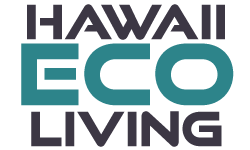On a balmy January afternoon, as he drives northwest along Oahu's sun-washed coast, Hunter Heaivilin happily explains his plans for creating an urban food forest in downtown Honolulu.
A full 2,400 miles from California, Hawaii boasts gasoline and housing prices among the country's highest, but one of the state's biggest imports—and a major factor in the high cost of living for its 1.4 million residents—is food. Estimates suggest that more than 85 percent of Hawaii's food is shipped in from across the Pacific, while a 2012 study by the state found that “replacing just 10 percent of the food Hawaii currently imports would amount to approximately $313 million dollars which would remain in the State.”
Estimates suggest that more than 85 percent of Hawaii's food is shipped in from across the Pacific.
With a 3 percent population increase since 2010, the state's capital and urban center of Honolulu, on Oahu, now contains nearly 400,000 residents, making it slightly more populated (and ergo, slightly hungrier) than Cincinnati.
Heaivilin, the director of three agriculture-focused nonprofits in Honolulu, was raised on Oahu (where he briefly attended high school with the author) and believes that its urban growth can be managed by making better use of Hawaii's own natural resources.”There's an interest in having a tethering to the land,” he says, “but there's a wealth of development in Honolulu, too. So how do we rectify destroying the landscape [with] all the benefits of urban spaces?”
“There's an interest in having a tethering to the land,” he says, “but there's a wealth of development in Honolulu, too. So how do we rectify destroying the landscape [with] all the benefits of urban spaces?”

